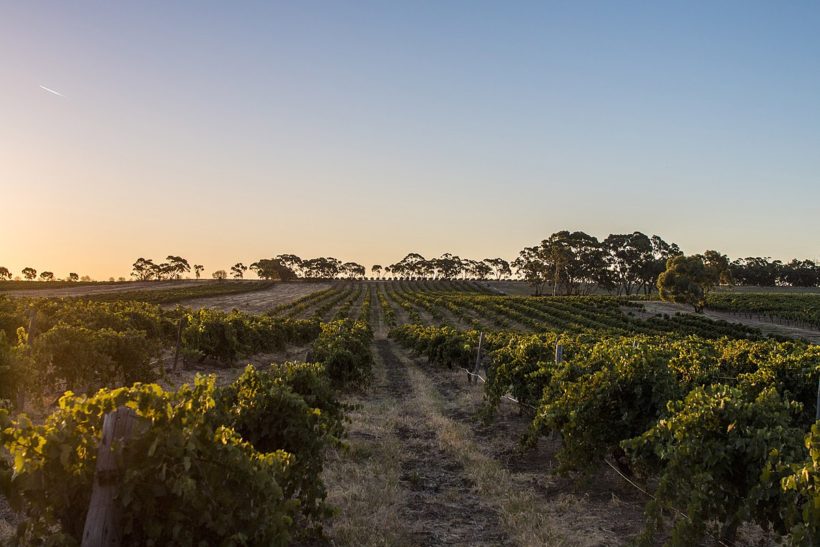 By MIRIAM ACZEL
By MIRIAM ACZEL
The global wine industry is not a significant source of greenhouse gas emissions—accounting for roughly 0.1% of global carbon emissions—but it is particularly vulnerable to climate change. Climate change has a wide variety of markers (heat, drought, etc,) and impacts (disease, reduced harvests, etc.) with a notable effect on the global winemaking industry, due to the delicate parameters that wine grapes require for growth.
Rising Temperatures and Extreme Weather
The effects of greenhouse gases in the atmosphere are cumulative, and are leading to significant changes in global climate patterns. According to the EPA, temperatures have already increased by 1.4 degrees Fahrenheit in the last 100 years, and they are projected to increase by between 2 to nearly 12 degrees F by the year 2100. This global temperature change also leads to a rise in extreme weather events. Importantly, wine grapes are grown in a narrow band of regions, and this band of viticultural regions is at risk to both rising temperatures and changing climate and extreme weather patterns.
Environmental Sensors
The composition and chemistry of wines is dependent on a variety of factors, including air, the soil conditions, and both precipitation and groundwater, meaning that wines are environmental sensors. Thus, climate change effects can be seen in two distinct ways in the global wine industry: alterations in the composition and characteristics of wines in traditional wine-growing regions; and in the creation of new wine-growing regions.
Terroir
In French vinicultural traditions, four key factors made up the terroir—soil, weather, type of grape, and topography of the region. These four elements give wines a distinct flavor, specific to where the grapes are cultivated. Wines, therefore, depend on specific microclimates that are largely limited to a narrow belt in the middle latitudes, where daytime average temperatures are moderate (largely between 50 to 68 degrees F), frost is rare, and there is sufficient rainfall. Rising temperatures in the middle latitudes have meant that vineyards have shifted as winemakers look to produce wines in newer, cooler areas.
Moreover, wine composition is also impacted by alterations in the soil’s chemistry, and the length of time to grape ripening. For example, earlier harvest times lead to increasing levels of sugar, which in turn alters the alcohol content, flavor, and tint of the wines. A recent study showed that if climate change patterns continue as expected—with increasing temperatures, drought, and heat—the global winemaking areas may suffer a reduction of nearly 80 percent by the end of the century. Thus, the taste of many popular wines today may be permanently changed.
The Vintner’s Dilemma
Winemakers across the globe are therefore faced with a dilemma: as the sugar content of grapes is increasing earlierin the growing season due to warmer temperatures, the potential alcohol levels also increase due to fermentation of higher content of sugar. These grapes reach higher sugar contents before the other factors that endow wines with their complex flavors (such as tannins and polyphenols) have fully developed. Vintners therefore must choose to harvest grapes earlier, leading to a reduced wine complexity but avoiding higher levels of alcohol, or wait for the development of the other factors but risk ever-increasing alcohol strength.
Silver Linings?
However, it may not be all bad news for the wine industry. Both the grapes and the winemakers who grow them are hardy and adaptive. Resourceful winemakers have begun to work toward adapting to ongoing climate changes, and also importantly reduce the impacts of their craft on the planet by reducing resource waste and minimizing their carbon footprints.
Hardy grapes, Hardier Farmers
Winemakers are already implementing strategies to mitigate impacts of climate change, such as the use of wind machines and heaters to prevent colder air from freezing grapes, new techniques to managing vine rows, and drones as well as owls and falcons to manage threats from new pests. Vintners are also changing the timing of pruning and harvesting grapes, by incorporating staggered harvesting times rather than uniform harvests. Also, during periods of high temperatures and solar radiation, vintners can increase shade by reducing the amount of grapevine canopies they trim, thus slowing grape maturation.
Also, changing the orientation of vine rows and planting on north-facing slopes and in low-lying zones are other adaptation measures that vintners are implementing to reduce the amount of heat and sunlight hitting the grapes. Moreover, adding irrigation systems, such as the recycled-water system introduced by farmers in Australia, and making improvements to the soil drainage in vineyards helps mitigate the impacts of increasingly intense and intermittent rains, as well as reduce the water footprint of the wine industry. Winemakers are also incorporating renewable energies such as solar panels and solar-powered weather stations, and experimenting with drought-resistant wines and dry-farming to reduce the amount of water used.
New Wine Countries?
However, climate change is also providing opportunities for new regions and countries to develop their vinicultural industries. As the locations with prime delicate balance of favorable winegrowing conditions are changing, new vineyards are appearing in countries such as Finland, England, Denmark, Sweden. According to a United Nations model, the vinicultural regions could migrate northwards as much as an average of 111 miles from current locations.
Earlier Harvest Correlating with Increased Quality?
Another study has shown that climate change may have actually helped the wine industry overall so far, through leading to earlier grape harvests that in turn lead to increased wine quality. The study looked at 400-year-old vineyard records from eight different regions in France and Switzerland, to understand how climate has impacted the time of grape harvests from 1600–2007, and the correlation of earlier harvest with wine quality. Interestingly, the researchers found that an “early grape harvest—and a good wine—depends on a wet spring, a hot summer, and a late season drought.” Moreover, the study showed that grape harvests have occurred an average of 10 days earlier since 1981. But the study showed that prior to 1981, hotter summers usually occurred during drought years, and droughts were a key predictor of early harvests and “good wine years.” However, current hot summers are occurring both with and without droughts, showing that this relationship between drought and hot summers is no longer true. Moreover, if global temperatures continue to increase, the grape varieties will reach their heat tolerance limits, as other scientific studies predict.
Bound by Terroir
Even if winegrowers are able to move their production northward, and new vinicultural regions open up, one key issue is the restriction of labelling. Stringent labelling laws have meant that vintners are hesitant to experiment with different grape varieties and diversify their crops. Currently, terroir means that the wine’s flavor is a manifestation of where and how the grapes were grown, and vintners may hesitate to introduce new varieties for fear of changing the terroir. For example, only 3 grape varieties may be labeled as ‘Champagne,’ and only 4 varieties comprise ‘Burgundy’ wines. These restrictions have meant that wine growers are limited to certain varieties, and reducing their opportunities for diversification.
Therefore, although many wine producers are already adapting to impacts of climate change, beginning operations in new regions, and working to reduce their carbon footprint, in order to better adapt to climate changes, the wine industry will likely need to rethink the diversity of grape varieties to ensure a wider range of options for winemakers moving forward.
For more on sustainable wine, see the recap of Leaders in Energy’s Sustainable Vineyard Tour to Sunset Hills Vineyard in Loudon County, VA.
Miriam Aczel is a President’s Scholar PhD Candidate at Imperial College London’s Centre for Environmental Policy. Her research focus is on international energy science and policy, with a focus on mitigation of environmental and health impacts of shale gas. She is also co-founder and co-director of the Amir D. Aczel Foundation for Research and Education in Science and Mathematics, a nonprofit working in Cambodia.
Miriam is Director of Communications and blog editor for Leaders in Energy.



Leave a Reply